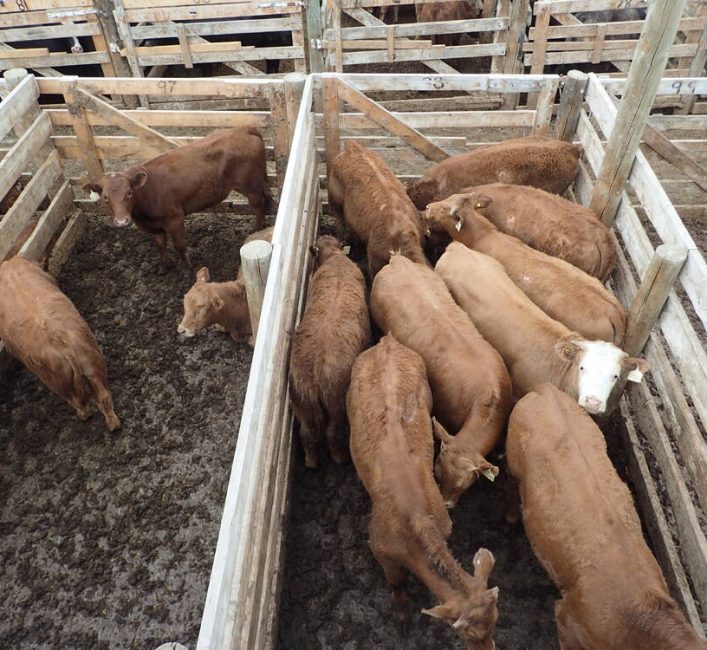Canada is expected to set a record year for beef export value in 2024.
Albert Eringfeld, vice-president of export market development for Canada Beef, said 2022 was a record and 2024 will be higher at more than $7 billion.
The volume of live cattle and beef has been trending upward as well.
Read Also

Best before doesn’t mean bad after
Best before dates are not expiry dates, and the confusion often leads to plenty of food waste.
Eringfeld said in 2024 about 46 percent of all beef slaughtered in Canada left the country.
The top markets are the United States, Japan, Mexico, South Korea and Vietnam, followed by others in Southeast Asia, Latin America, Europe and the Middle East.
“There’s actually 56 different countries in 2023 where Canadian beef was exported,” he said during the Saskatchewan Beef Industry Conference.
The European market provides the highest value per kilogram but with little volume. This is followed by Hong Kong, Taiwan, the United Arab Emirates, Kuwait and then the U.S.
Eringfeld said the U.S. market has been stable in the last five years and worth about $4 billion. Canada has a 22 per cent market share of U.S. imports last year, a small decline from the previous year. More than 90 per cent is shipped as fresh chilled beef and most is boneless.
“Ground beef is the largest segment of Canadian beef exports to the U.S.,” Eringfeld said. “Other cuts used in grinding or for the production of thin meats, especially for the Hispanic market, coming from the chuck and hip, are also very popular.”

He said while the U.S. is the world’s largest beef producer, it is also the second-largest importer, and having tariff-free access is critical to Canada. It is Canada’s main competitor in other export markets.
Eringfeld said Canada Beef is planning for tariffs by looking at where it can shift marketing.
Its main competitors in the U.S. are lower cost producers such as Australia and Brazil, and he said imports are likely to grow because of lower domestic production.
Exports to Japan have not grown a lot in either volume or value, but the country remains a loyal customer. Canada has seven per cent market share there, competing against Australia, the U.S., New Zealand and Mexico. The market was worth $322 million in 2023.
About 30 per cent goes as fresh chilled beef and about 25 per cent of that goes into the retail stream. The remainder goes to restaurants and further processing.
The offal market accounts for about 45 per cent of shipments, and tongue is a popular item, said Eringfeld, as are brisket cuts, chuck and flank meats.
Under the Comprehensive and Progressive Partnership for Trans-Pacific Partnership, import duties are dropping from 22.5 per cent to nine per cent by 2030. Import duties of 2.5 per cent on offal are falling to zero between 2028 and 2030.
Japan is about 42 per cent self-sufficient in beef, due largely to its Wagyu production. Wagyu beef prices have been higher than imported beef but are becoming more competitive as the value of the yen depreciates.
The number three market, Mexico, represents what used to be the second largest export market. Some of that disappeared but last year started to return, Eringfeld said. It now sits at nine per cent and a value of $284 million.
About three-quarters is shipped fresh, with 20 per cent going to retail and 80 per cent to restaurants. Mexico buys a variety of cuts, including offal, chuck and flat meats such as inside rounds and short ribs.
Imports continue to grow as increased wages change food consumption habits and consumers increasingly choose higher-value cuts. There are also challenges such as drought, which threatens about 60 per cent of the rangeland and affects local production.
“Sustainability is an important focus,” Eringfeld said, as is animal welfare.
Canada faces lower cost competition from Brazil and Argentina after Mexico’s decision last year to import from South America for the first time.
Import tariffs continue to decline for Canadian beef going into South Korea, which will improve competitiveness. Under the free trade agreement, tariffs are decreasing 2.67 per cent each year. Import duties of 10.6 per cent will be zero by 2020, while the duties on offal were removed this year.
Imports peaked in 2022, dropped and then went back up in 2024 and represent about three per cent market share and $122 million in value. Most product is shipped frozen, and Canada would benefit from a greater presence in retail stores, he said, as there isn’t enough recognition of the Canadian brand.
Finally, Vietnam is a small market worth about $79 million in 2023 since exports began moving there in 2019. Canada holds a four per cent market share in the country, which also imports a lot of low-cost Indian water buffalo meat. Removing that from the equation would move Canada to a 26 per cent market share of actual beef.















